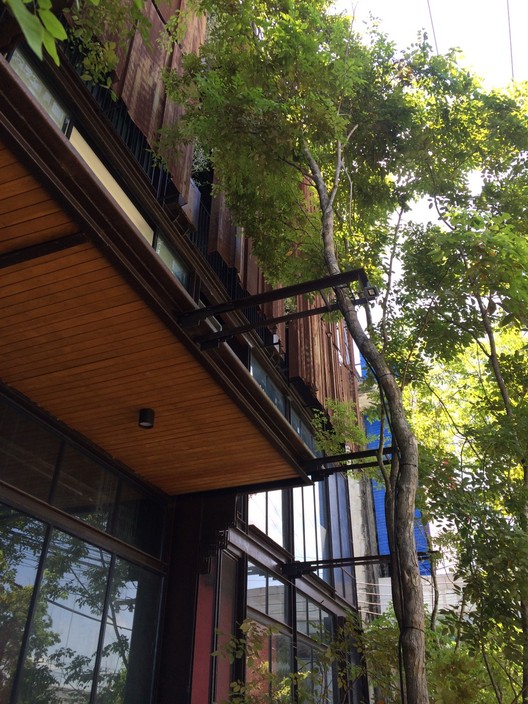
-
Architects: Walllasia
- Area: 586 m²
- Year: 2018
-
Photographs:Spaceshift Studio
-
Manufacturers: Sherwin-Williams, LEE NGIAB SENG Co., Ltd., Siam Yamato, TOA
-
Landscape Design: Walllasia, Suriya Umpansiriratana, Prawit Poolkumlung

Text description provided by the architects. The Oui J’aime Hotel is a wholly unique building, the direct result of limitations in space combined with the unusual dimensions of the property. This new destination for visitors to Chachoengsao is owned and operated by the same family that runs Tang Seng Jua, a famous pastry shop there that sells kanom pia, a Chinese-style treat stuffed with mung-bean paste.

.jpg?1578497335)

With its metal structure, the narrow and long rectangular building is bold and outstanding, its appearance softened by the facade of rusted metal sheets. The overall effect is almost like that of an art exhibition. The artsy facade doubles as a vast partition maintaining the guests’ privacy and as a sunshade during the day. And, because the large surface reflects streetlights, it adds to the illumination in the neighborhood as well.

.jpg?1578497497)

This dual-function approach is always a high priority for Walllasia, at once addressing design issues while maximizing space. The concept is reflected in the metal pond in front of the dorm rooms and multipurpose room. Viewed from those rooms, the broad surface of the water adorned with Siamese rosewood offers a calm corner that’s restful for the eyes. Pragmatically, it’s also a reservoir for air-conditioner wastewater and serves as a canopy over the ground floor while helping maintain the privacy of the interior.


Limited space has necessitated a rare rectangular form to the structure, but any disaffection at first glance disappears as you enter the building. There are trees inside that turn the compact spaces in front of the private rooms and bathrooms into personal corners and make the small building seem larger.Consider the story behind this meticulously planned place, the way its spaces have been utilized. And consider, too, whether good fortune might derive from the green-and-red interior, whose colors come from cherished Chinese tradition.
































.jpg?1578497312)
.jpg?1578497335)
.jpg?1578497497)
.jpg?1578497636)
.jpg?1578497550)
.jpg?1578497291)
.jpg?1578497392)

